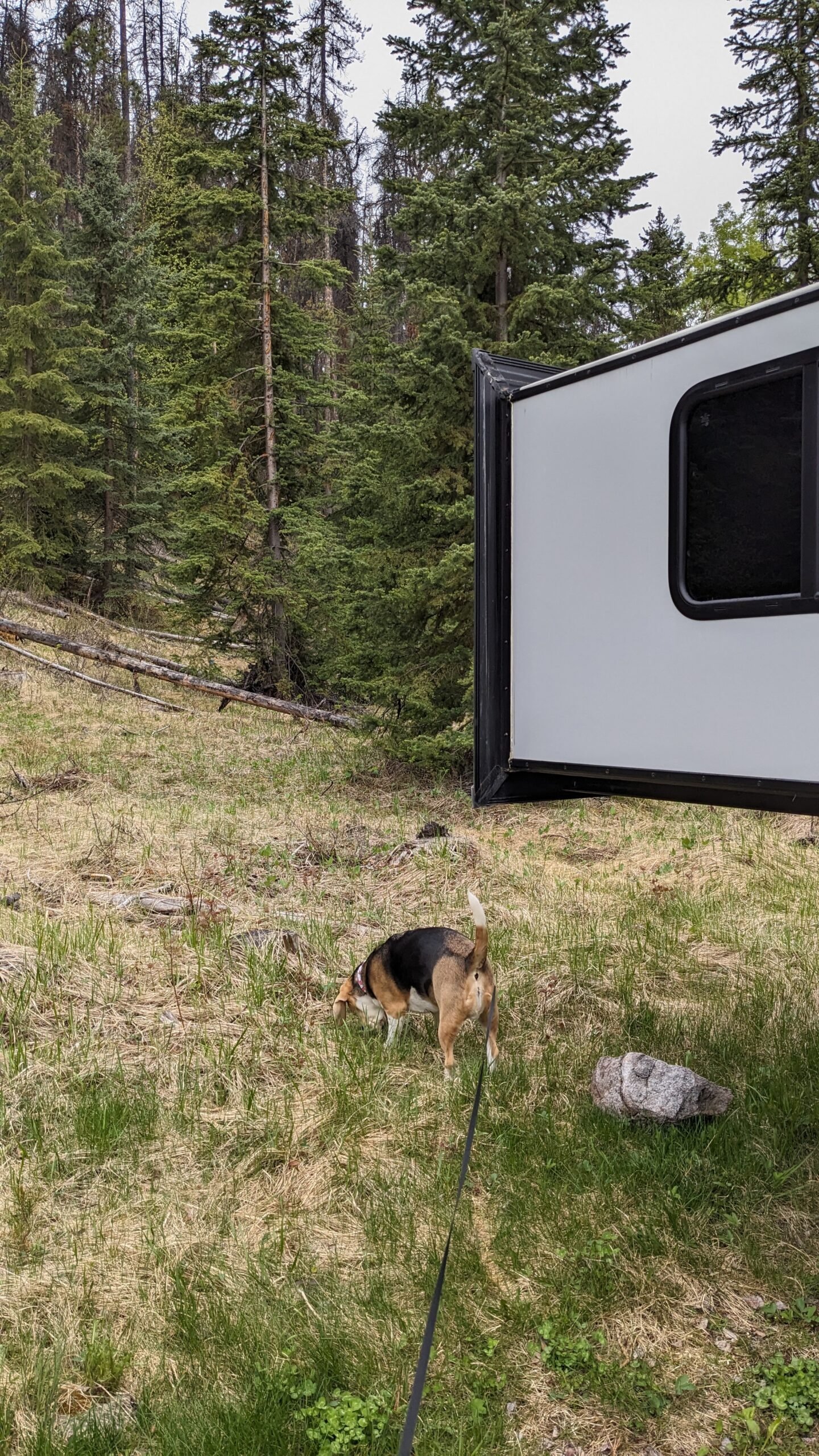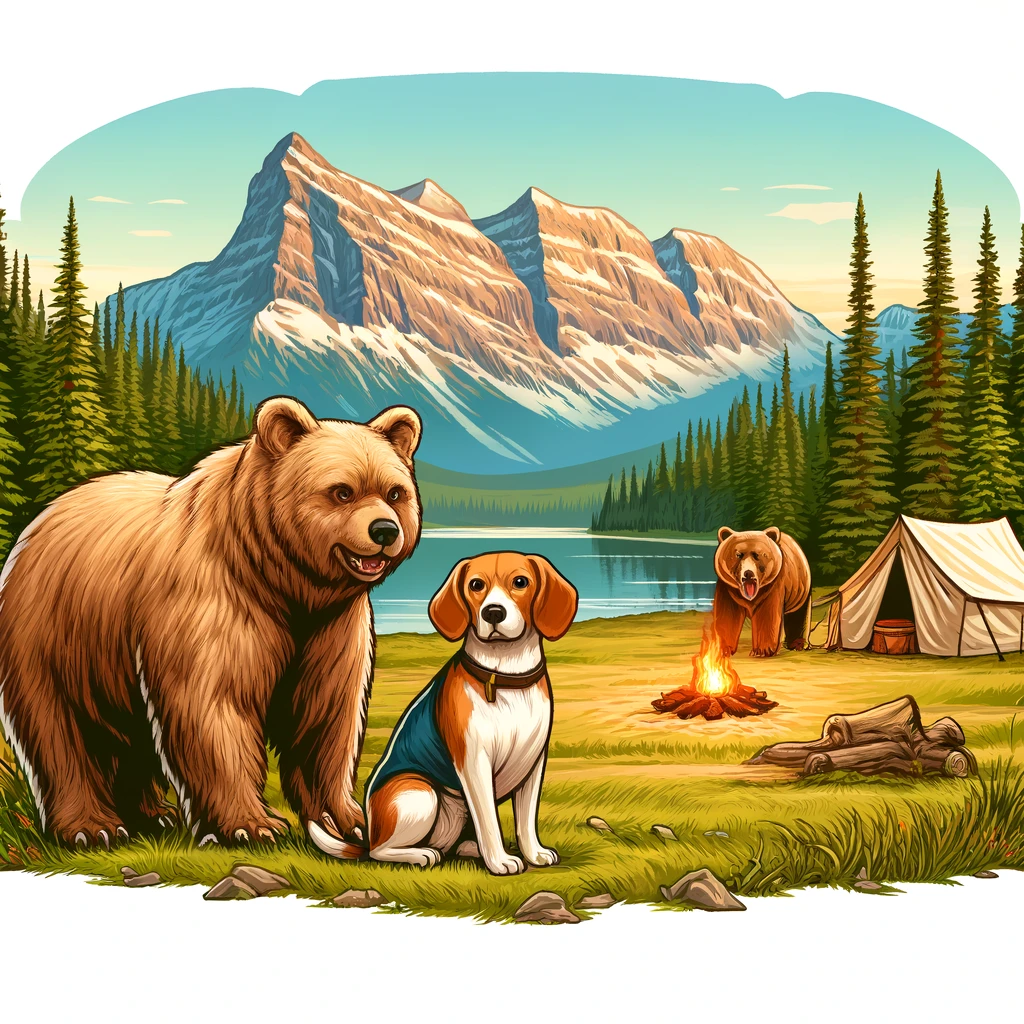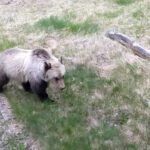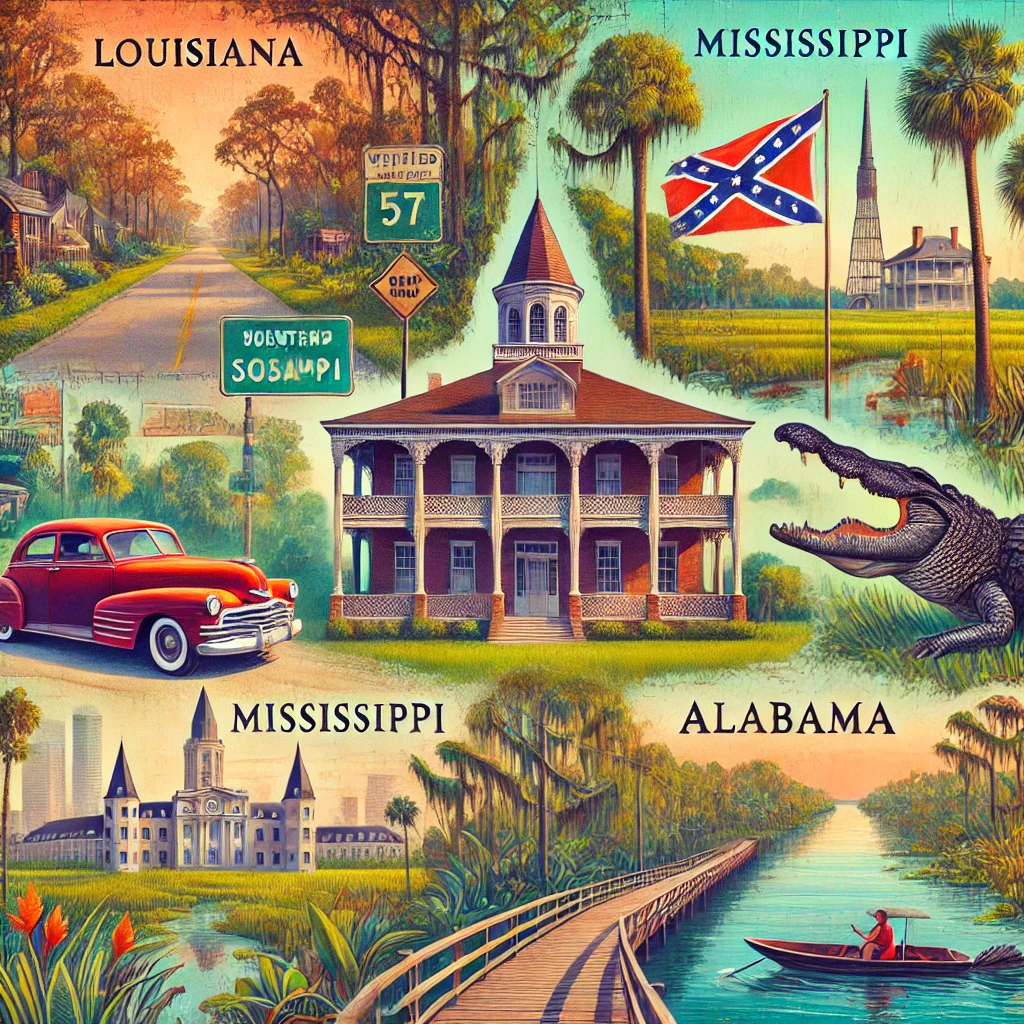During an tranquil Spring evening at Whistlers Campground in Jasper National Park, we had an unexpected visit from two grizzly bears. This encounter highlighted the wild beauty and inherent risks of camping in bear country, providing a vivid reminder of the need for vigilance and respect for wildlife.
The Sightings
Around dusk, as we settled into our campsite, we noticed movement in the distance. Emerging from the forest, two grizzly bears cautiously made their way towards the picnic area. The first bear, a likely adult female based on her size and the presence of a smaller bear following her, moved with a purposeful gait. The second bear, smaller and presumably a cub, stayed close to its presumed mother, displaying the natural bond and protective behavior common among grizzlies.
From the safety of our camper, we captured these unforgettable moments on camera, documenting the graceful yet powerful presence of these magnificent creatures. Our beagle, who had been sleeping on my lap while we watched TV, sensed danger and started barking, which ultimately scared the bears away.

Understanding Grizzly Bear Behavior
Grizzly bears, also known as North American brown bears, are iconic symbols of the wilderness. Their behavior and interactions can offer fascinating insights into their lives:
- Territorial Nature: While grizzly bears are not territorial in the strictest sense, they do have large home ranges that they roam in search of food and mates. These ranges can overlap with those of other grizzlies and even black bears.
- Activity Patterns: Grizzlies are primarily diurnal but can adjust their activity patterns based on human presence and food availability. In areas with less human activity, they are more active during the day, while in busier areas, they might become nocturnal to avoid encounters.
- Diet: Grizzlies are omnivores with a varied diet that includes vegetation, berries, fish, and small mammals. The presence of food often dictates their movements and interactions.
Safety Precautions for Campers
Our experience serves as a crucial reminder of the importance of bear safety while camping in areas like Jasper National Park:
- Store Food Properly: Use bear-proof containers and ensure all food and scented items are securely stored away from your sleeping area.
- Maintain a Clean Campsite: Avoid leaving food scraps, wrappers, or cooking utensils outside. A clean campsite is less likely to attract bears.
- Make Noise: Bears generally avoid human contact. Making noise while hiking or moving around the campsite can alert bears to your presence, reducing the likelihood of surprise encounters.
- Bear Spray: Always carry bear spray and know how to use it. It can be a critical deterrent in a close encounter.
- Stay Alert: Be aware of your surroundings. Look for signs of bear activity such as tracks, scat, or scratched trees.
Identifying Grizzly Bears vs. Black Bears
Understanding the differences between grizzly bears and black bears can help campers recognize and react appropriately to bear encounters:
- Physical Characteristics: Grizzlies have a pronounced shoulder hump, long claws, and a concave facial profile. Black bears, despite their name, can vary in color and have a straighter profile with shorter claws suited for climbing.
- Size: Grizzlies are generally larger, with males weighing between 400-790 pounds. Black bears are smaller, typically weighing 150-600 pounds.
- Behavior: Grizzlies can be more aggressive, especially females with cubs. Black bears are more timid and likely to avoid confrontation by climbing trees.
Our Encounter in Jasper
Whistlers Campground, nestled in the heart of Jasper National Park, offers a unique blend of serene beauty and wild unpredictability. Our unexpected visitors today reinforced the importance of preparedness and respect for wildlife. Seeing these grizzly bears up close was a humbling reminder of nature’s power and majesty.
For those planning to visit Jasper National Park, these encounters are part of the adventure that makes the park special. By following safety guidelines and staying informed about bear behavior, campers can enjoy the beauty of the wilderness while minimizing risks.
Today’s sighting of grizzly bears at Whistlers Campground was a remarkable experience that underscores the delicate balance between humans and wildlife in natural habitats. As we continue our travels, this encounter will serve as a poignant reminder of the respect and caution required when sharing spaces with such magnificent creatures. Whether you’re a seasoned camper or a first-time visitor, always prioritize safety and stay bear-aware to make the most of your wilderness adventures.
By understanding and respecting grizzly bears and their habitats, we can ensure that both humans and bears can safely coexist in these shared spaces.








